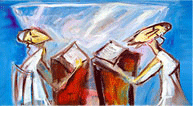Recent Posts
- The Reflective Light of Kabbalah (Jewish Mysticism)
- Beginning Kabbalah in the Comfort and Privacy of Your Own Soul
- Kabbalah Beliefs Already Undergird Your Belief System
- The Only Kabbalah Is God’s Kabbalah
- Kabbalah Practice and Discipline
- Kabbalah Books and Primary Source Texts
- Kabbalah Symbols: 72 Names
- Kabbalah Meditation and Study
- Kabbalah, Reiki, and Energy
- The Mystical Nature of Spiritual Energy
- Kabbalah Astrology, Chronology, and Linguistics
- Two Meanings of Lucky Eye and Evil Eye
- The Future in Prophetic Kabbalah
- Teaching Kabbalah for Everyone
- The “Kabbalah Centre” Brand
- Kabbalah Jewelry Represents Availability
- The Covenant Behind a Kabbalah Ring
- A Case Study on Kabbalah Red String
- The Spiritual Energy of the Jewish Hamsa
- The History of Kabbalah Tattoos
- Privacy Policy
- Contact Us
Kabbalah Books and Primary Source Texts
The two primary kabbalah books are the very compact Sefer Yetzirah and the equally rarefied Zohar. Most other kabbalah books are commentaries upon these very basic kabbalah books or upon their teachings. Many kabbalah internet sites contain these works as well as a wide range of kabbalah books. The kabbalah internet sites for the Kabbalah Centre and for the Sacred Texts of Judaism are particularly accessible. The Kabbalah Centre makes the Hebrew and English Zohar available at zohar.com, while Sacred Texts of Judaism at sacred-texts.com/jud include the first English translation of the Sefer Yetzirah.
Summary of the Sefer Yetzirah
Put into writing no later than the Mishna period, the Sefer Yetzirah has six chapters (or “pirqe”, singular “pereq”); it is the first of all kabbalah books and is attributed to Avraham Avinu. The entire Hebrew text can be memorized for reflection with reasonable effort. The book traces the various permutations of significant numbers and patterns through their various applications in creation. Its primary message is that the particular marks of the one God can be traced in every experience known to man.
Pereq 1: From the 10-named God come 10 sefiroth (principles, emanations), which are witnessed throughout creation in the covenants of the hands and feet, the ten dimensions, etc. Pereq 2: The 22 letters are also principles, the foundations of all creation, categorized as 3 mothers, 7 doubles, and 12 singles. Pereq 3: The 3 mothers, alef, mem, and shin, are witnessed in three-part dialectic tensions, the three elements of air, water, and fire, etc. Pereq 4: The 7 doubles (letters which carry a second sound if pointed by dagesh) are witnessed in the seven points of a three-axis coordinate system, the sun, moon, and visible five planets, etc. Pereq 5: The 12 singles are witnessed in the twelve signs of the zodiac, the twelve months, etc. Pereq 6: The interactions between the numbers 3, 7, and 12 are described, and all are recognized as manifestations of one God and faithful King over all; Avraham Avinu is blessed by God with the revelation of this material and with the covenant.
Summary of the Zohar
The Zohar (or Sefer Hazohar) preserves kabbalah beliefs of the later Gemara period but was not published until around 1270 A.D. Possibly the most widely used of all kabbalah books, it describes a rich tapestry of detailed symbolic interpretation of all 54 subdivisions (parashioth) of Torah, revealed in conversations among the rabbis. Much of the commentary is taken from the Babylonian Talmud and Midrashim and adapted for its mystical setting.
The Zohar synthesizes this Torah study into an extended array of source material for kabbalah beliefs that, unlike the brief Sefer Yetzirah, can hardly be summarized comprehensively. Some of its most recurrent themes are the nature of God, the nature of souls, the order of Creation, the order of God’s chariot (the merkabah of Ezekiel 1), the reconciliation of male and female in echad, and the relationship of God and man in experience.
This overview of the most basic building blocks of cosmic symbolism can only scratch the surface. As we begin to indicate how the blocks can be put together, the excitement of combining the kabbalah beliefs into new forms will become obvious.
